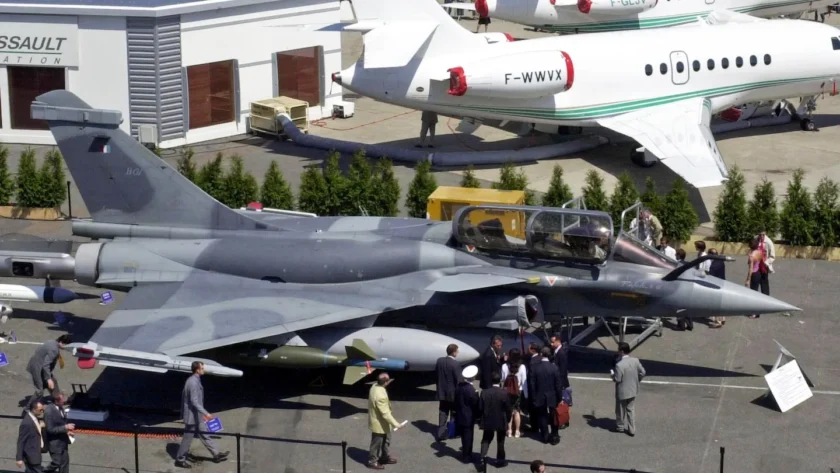The Swarm Loitering Munition Unmanned Aerial Vehicle (SLMUAV) concept represents a decisive leap in tactical aerial warfare, integrating intelligence, surveillance, reconnaissance (ISR) and precision strike capabilities within a compact, autonomous aerial platform. It is designed to embody flexibility, cost-efficiency, and coordinated lethality, offering commanders a controllable aerial strike network that minimises exposure of human operators on the battlefield.
The primary role of an SLMUAV is to conduct extended loiter missions over target zones, supported by advanced electro-optical and infrared sensors. These payloads enable real-time reconnaissance, target identification, and terminal guidance under all-weather conditions. The munitions operate beyond line of sight, ensuring that remote operators maintain situational awareness and decision authority before executing a strike.
Each SLMUAV integrates a combined propulsion and payload module, optimised for Vertical Take-Off and Landing (VTOL) operations. This allows deployment without runways or complex logistics, extending applicability to dense urban or mountainous theatres.
Once airborne, the UAV transitions to level flight, cruising autonomously to the designated area of interest using waypoint navigation and encrypted communication links.
The system’s defining attribute is its ability to loiter. Loitering enables dynamic target engagement, permitting extended observation or redirection depending on evolving battlefield intelligence. By combining ISR endurance with an integrated warhead, the SLMUAV bridges the gap between traditional reusable drones and expendable munitions, achieving a balance between persistence and precision lethality.
Swarm operation is the technological centrepiece of this initiative. Each unit in a swarm acts as both an autonomous entity and a cooperative node within a networked formation. Through cooperative algorithms, the UAVs can maintain distributed formation, execute roles such as reconnaissance relays, decoys, or coordinated strikes, and adapt to changing tactical scenarios in real time. Inter-UAV data exchange allows decentralised decision-making and resilience against jamming or single-point failures.
In operational terms, swarm-enabled loitering munitions change the dynamics of target engagement. Multiple UAVs can cover vast areas, cross-cue sensor data, and rapidly prioritise targets. Once a threat is classified, the swarm allocates one or more munitions for engagement while others continue surveillance. This mosaic approach compresses the sensor-to-shooter cycle, offering near-instantaneous response capability against mobile or time-sensitive targets.
An operator, located remotely from the combat zone, retains final control of engagement. The human-in-the-loop structure ensures legal and ethical compliance while leveraging artificial intelligence for tracking, navigation, and target verification. The interface allows the operator to designate targets visually or electronically, commanding individual or group attacks.
The SLMUAV platform incorporates modular architecture to support varied payloads – from high-explosive anti-tank charges to fragmentation or thermobaric warheads. A modular design philosophy also facilitates reconfiguration for non-lethal ISR operations, electronic warfare, or communication relay missions.
From a developmental standpoint, the SLMUAV task underscores a significant technological convergence in propulsion, navigation, autonomy, and networking. The adoption of high-energy density batteries, lightweight composite materials, and miniaturised avionics enhances range, loiter time, and payload efficiency. The system’s VTOL flight profile, combined with autonomous navigation, enables rapid launch and recovery even in hostile or confined spaces.
The overarching objective of the SLMUAV program is to establish an indigenous technological base for battlefield-deployable loitering munitions capable of swarm operation. Upon full validation, such systems can redefine tactical doctrines by reducing dependence on costly cruise missiles and conventional close air support while augmenting ground-unit firepower with networked, on-demand precision strikes.
Future iterations of the SLMUAV are expected to integrate enhanced autonomy through artificial intelligence, improved swarm coordination protocols, and adaptive mission planning driven by real-time sensor data. This evolution would lead to greater mission independence, coordinated target saturation, and deep strike capability without risking manned assets.
In sum, the Swarm Loitering Munition UAV project represents a transformative stride in autonomously coordinated aerial warfare. Its successful realisation will yield an operational system that is affordable, intelligent, and lethal—capable of seamless transition between reconnaissance and precision engagement. The SLMUAV’s combined ISR, attack, and formation capabilities place it at the forefront of next-generation unmanned combat innovation.
---------------------------------------------------------------------------------------------------






